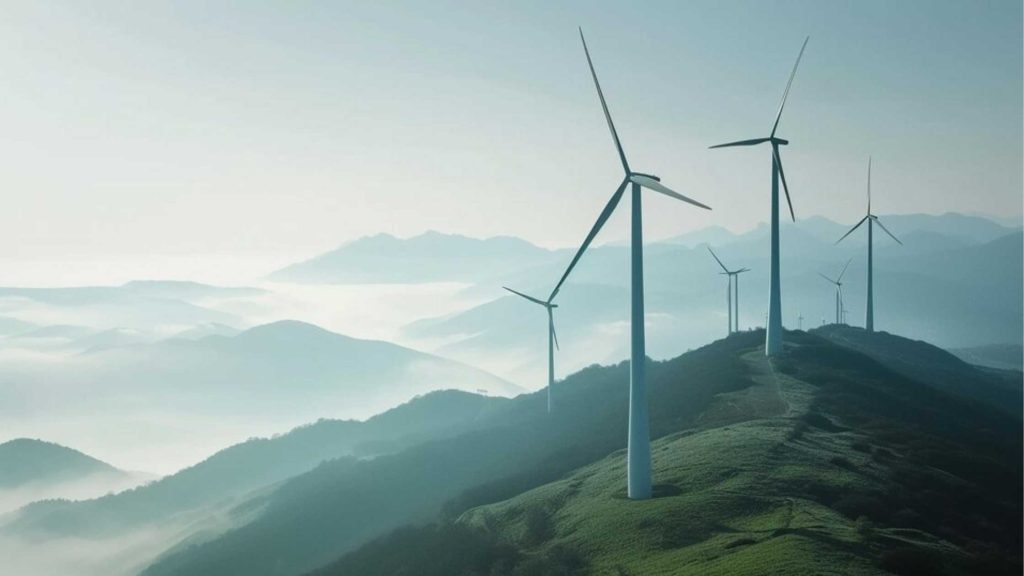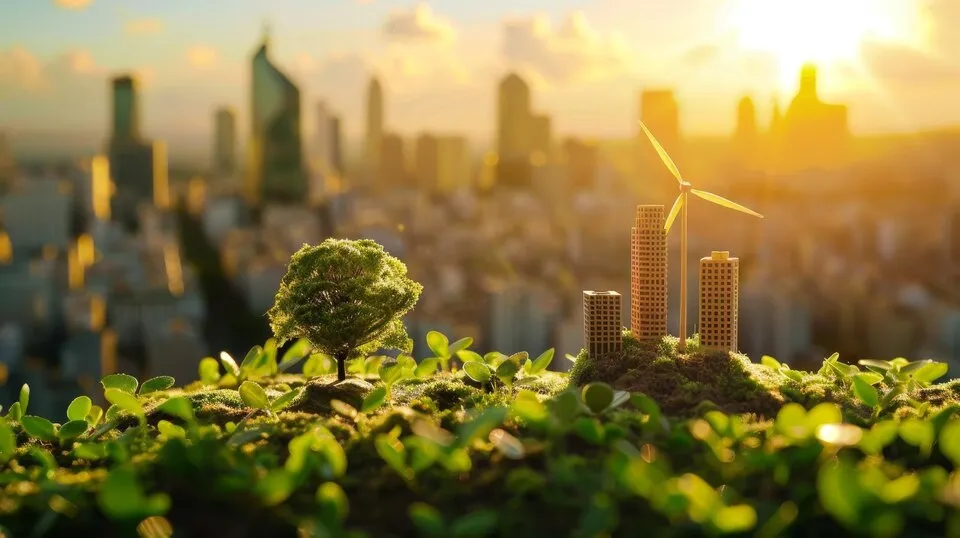The article on Niche Clean Energy explores the ground-breaking potential of wind energy as a renewable energy source. It demonstrates how wind turbines’ enormous blades play a crucial role in generating electricity and accelerating the shift to a cleaner future.
The blog discusses how wind power technology is developing and stresses the importance of lessening environmental problems and relying less on fossil fuels. It looks at many different things, like how wind farms are expanding, how turbine design is improving, and how the world is moving towards renewable energy.
Moreover, the piece might touch upon the benefits of wind power, including its potential to decrease carbon emissions and create job opportunities in the renewable energy sector. It aims to inform readers about wind power’s transformative role in shaping a more sustainable and environmentally friendly energy landscape.
The Rise of Wind Power
Humanity has used wind power for thousands of years, from moving large ships over huge oceans to grinding grain. However, in recent decades, wind power has become increasingly prominent in the global energy landscape.
After the turbulent 1970s, the modern wind power sector took off as people’s concerns about the environment and the limitations of using fossil fuels increased. At first, wind turbines were like little guardians, and their effectiveness was insignificant compared to the growing need. But thanks to constant technical advancement, these buildings quickly became mighty giants that could transform the storm’s power into enormous amounts of electrical energy.
Landscape of wind power and Turbines in India
India has become a global pioneer in deploying renewable energy, as seen by the recent expansion and alteration of the country’s wind power and turbine landscape in recent years. Due to the government’s dedication to energy security and environmental development, wind-generating plants rapidly expand throughout India.
Niche Clean Energy, an emerging player in the renewable energy sector, has been instrumental in driving this transition. Leveraging innovative technologies and strategic partnerships, Niche Clean Energy will contribute to the proliferation of wind turbines in India, harnessing the country’s vast wind resources to generate clean electricity.
A favorable legislative framework, including incentives like accelerated depreciation, generation-based incentives, and renewable purchase commitments, favors India’s wind power industry. These actions have fostered a thriving ecosystem for wind energy development, drawing considerable investments from domestic and foreign partners.
Additionally, technological breakthroughs have introduced cutting-edge turbines that can maximize energy output while minimizing environmental impact. By implementing this state-of-the-art technology first, Niche Clean Energy has improved the dependability and efficiency of wind power plants throughout India.
As a result of these efforts, India’s wind power capacity has grown substantially, surpassing significant milestones in renewable energy generation. With Niche Clean Energy’s continued dedication to innovation and sustainability, the future of wind power and turbines in India looks promising, contributing significantly to the nation’s energy transition and climate goals.
Turbines: Engineering Marvels
Wind turbines are the tall buildings at the center of the revolution in wind power. These technical marvels capture wind energy through several complex procedures and transform it into electrical power.
1. Blades: Carefully crafted to maximize wind energy absorption, the blades are a wind turbine’s most visually arresting part. Constructed from robust yet lightweight materials like carbon fiber or fiberglass, these aerodynamic marvels have a length of more than 100 meters.
2. Rotor: The rotor is attached to the blades and transforms the wind’s rotational energy into mechanical energy. The generator shaft revolves around the rotor, where the blades spin.
3. Generator: The true magic is done in the generator housed inside the nacelle. Here, electromagnetic induction converts the rotor’s rotational energy into electrical energy.
4. Nacelle: The wind turbine’s control center is at the tower’s top. It has many parts, such as the yaw motor, gearbox, and numerous sensors, all of which cooperate to maximize efficiency and guarantee safe operation.
How Turbines are Shaping the Future
Using the energy of innovation and sustainability, turbines are silent guards influencing the energy landscape of the future. Discover how these enormous giants guide us towards a wind-powered future, from environmental stewardship to economic vigor.
1. Environmental Impact: Turbines offer a clean, renewable energy source and play a key role in lowering greenhouse gas emissions and lessening the effects of climate change. They also reduce the need for fossil fuels, which reduces air and water pollution.
2. Energy Independence: By utilizing wind energy, turbines help countries become more energy independent by lowering their dependency on imported fossil fuels and improving energy security.
3. Economic Gains: Manufacturing, installation, maintenance, and other associated industries employ people who work on wind power installations. They also boost regional economies by generating income for landowners who host turbines and investing in infrastructure.
4. Technological Developments: Continuous research and development in turbine technology results in higher cost-effectiveness, efficiency, and reliability. Larger rotors, higher towers, and more intelligent control systems are innovations that maximize energy production and integration with current power networks.
5. Community Empowerment: Local communities are frequently involved in wind energy projects through ownership, partnership, and consultation. This empowers communities and fosters societal acceptance, guaranteeing they will directly profit from developing renewable energy resources.
6. Scalability and Flexibility: Wind farms can be scaled to meet various energy needs, ranging from small installations to big utility-scale projects. Additionally, turbines can be installed in multiple settings, such as offshore areas, extending wind energy’s potential and reach.
7. Resilience and Adaptability: Unlike limited fossil fuels, wind power offers a resilient energy source that is not affected by changes in supply or price fluctuations. It also adds to a diversified and dependable energy mix by balancing out other renewable energy sources like solar.
8. Global Impact: Wind energy has the potential to significantly contribute to the achievement of global climate targets and the advancement of sustainable development on an international scale. Its growth has the potential to lower carbon emissions worldwide and create a more sustainable future for future generations.
Challenges and Opportunities of Using Turbines
Wind power has drawbacks in addition to its many advantages. When navigating the ever-changing field of renewable energy, turbines provide both opportunities and challenges. Discover the complexities of using wind energy, from overcoming technical obstacles to taking advantage of the opportunity for sustainable innovation and a revolution in the world’s energy supply.
1. Intermittency: Because turbines depend on wind, it might be challenging to produce energy consistently. Solutions that reduce intermittency and provide a steady power supply include grid integration, energy storage, and hybrid systems that combine wind with other renewable energy sources.
2. Aesthetics and Land Use: The installation of turbines raises questions regarding the aesthetic impact and land use. Strategic site selection, community involvement, and creative design techniques are necessary to minimize visual intrusion and maximize land use efficiency while balancing aesthetics with energy needs.
3. Effect on Wildlife: Turbines may risk birds and bats due to collisions and habitat disruption. To reduce ecological effects and encourage biodiversity conservation, mitigation solutions include pre-construction research, habitat restoration techniques, and turbine designs that are friendly to animals.
4. Noise and Health Concerns: Noise from turbines can cause irritation and health problems for the local population. Setback measures, sound barriers, and noise-reducing devices must be implemented to decrease turbine noise and protect neighborhood well-being.
5. Cost and Financing: The substantial initial investment costs associated with turbine projects can create financial obstacles to their wider adoption. To overcome this obstacle, creative funding sources, encouraging public policies, and cost-cutting technology developments are needed to increase wind energy’s economic viability.
6. Effect on Wildlife: Turbines may risk birds and bats due to collisions and habitat disruption. To reduce ecological effects and encourage biodiversity conservation, mitigation solutions include pre-construction research, habitat restoration techniques, and turbine designs that are friendly to animals.
7. Noise and Health Concerns: Noise from turbines can cause irritation and health problems for the local population. Setback measures, sound barriers, and noise-reducing devices must be implemented to decrease turbine noise and protect neighborhood well-being.
8. Cost and Financing: The substantial initial investment costs associated with turbine projects can create financial obstacles to their wider adoption. To overcome this obstacle, creative funding sources, encouraging public policies, and cost-cutting technology developments are needed to increase wind energy’s economic viability.
9. Regulatory and Policy Frameworks: Turbine development is subject to regulatory frameworks and policies governing land use, environmental protection, and energy markets. Streamlining permitting processes, incentivizing renewable energy deployment, and fostering regulatory stability are essential for promoting turbine deployment and maximizing its potential benefits.
Key Takeaways
Essentially, wind power is a sign of optimism and advancement in the fight against climate change and environmental damage, not just a means of generating electricity. It’s more important than ever to embrace the promise of wind energy as we stand on the brink of a renaissance in renewable energy. We are paving the way for a sustainable and prosperous future by fully incorporating wind power into our energy mix. By realizing the promise of wind energy, we can pave a way lighted by greener, more robust energy systems, protecting the planet’s health and ensuring a legacy of vitality for future generations.



It is the best time too make some plans for the
longer term and it’s time to be happy. I’ve learn this
post and if I may just I want to counsel you some fascinating issues
or suggestions. Maybe you can write next articles referring to this article.
I desire to learn more things approximately it!
“Thank you for your comment! I’m glad you enjoyed the post. I appreciate your suggestions and will consider them for future articles. Stay tuned for more!”
Pingback: Sudhansh
This article does a fantastic job of outlining the transformative role of wind turbines in renewable energy. The section on “Turbines: Engineering Marvels” is particularly insightful, breaking down complex processes in an easy-to-understand manner. However, adding real-world case studies or examples, like successful wind farm projects, could enhance relatability and provide practical context.
The blog provides a comprehensive overview of wind power’s advantages and challenges, with a strong emphasis on India’s wind energy landscape. The discussion on community empowerment and economic benefits is commendable. Incorporating visuals, such as diagrams or charts, could make the technical aspects more engaging and visually appealing for readers.